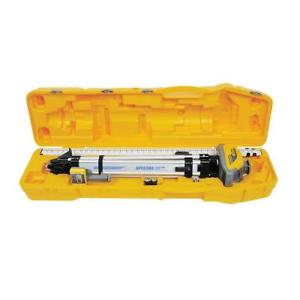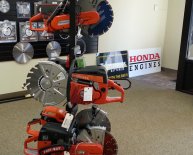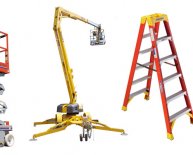
Level tools Construction
 One of the tools that is most commonly used on construction sites are levels. A level is as simple to use as it is essential in the construction industry. It is used to make sure that correct measurements are taken when measuring the elevation or the grade of an area. Levels provide accurate readings on the correct horizontal level, and some of them give an accurate vertical level as well. In addition, some even can measure accurate levels of angles. A level is necessary no matter how easy a construction job may be. When most people think of levels, they typically think of the 4-foot levels that are commonly used in construction or around the home. However, there are various other types of levels available on the market today. With the great variations in the types, models, and price ranges in which levels are found, it can be overwhelming trying to figure out which one to purchase. By becoming familiar with the five different uses for levels on construction sites (as well as some information on using levels for indoor work), users can better determine which levels to purchase to meet their needs.
One of the tools that is most commonly used on construction sites are levels. A level is as simple to use as it is essential in the construction industry. It is used to make sure that correct measurements are taken when measuring the elevation or the grade of an area. Levels provide accurate readings on the correct horizontal level, and some of them give an accurate vertical level as well. In addition, some even can measure accurate levels of angles. A level is necessary no matter how easy a construction job may be. When most people think of levels, they typically think of the 4-foot levels that are commonly used in construction or around the home. However, there are various other types of levels available on the market today. With the great variations in the types, models, and price ranges in which levels are found, it can be overwhelming trying to figure out which one to purchase. By becoming familiar with the five different uses for levels on construction sites (as well as some information on using levels for indoor work), users can better determine which levels to purchase to meet their needs.
Types of Levels Used on Construction Sites
To decide which type of level is needed for a job, it is a good idea to think about the kind of work that the level is going to need to do. Are the construction jobs primarily interior or exterior? Both interior and exterior jobs can require the use of a level, however the difference in the requirements can make a difference in the type of level that is needed to complete the job. Some jobs are small and require the use of a carpenter's level, which are available in 2-foot sizes and larger. On the other hand, some jobs require the use of a more precise level like a laser level. The type of level that is needed largely depends on the type of job that is being completed.
Carpenter's Level
A carpenter's level generally looks like a plank of wood with a wide body for stability. This is to make sure that the area can be measured accurately. A tube is mounted in the center of the level with an air bubble inside of the tube that is used to check the horizontal level of the area. Some models offer additional tubes that can not only check the vertical level, but even the level of an angle as well.
Laser Level
A laser level is used in construction and in surveying to measure the horizontal plane of an area. When it is affixed to a tripod, a laser level has a projector that contains a rotating head with a mirror sweeping the laser beam vertically. Some models of laser levels have self-leveling mirrors that make using the level much easier. However, even manually adjustable models are easy to use. The hands-free nature of laser levels offers users more freedom, making them the most popular choice for most construction sites.
5 Uses for Levels for Outside Work
The type of level that is used most often for outside work is a laser level. Although indoor jobs require precision as well, outdoor construction is what sets the original foundation of the building, and precise measurements are a critical element. For example, without an accurate grade of the building site, the building foundation cannot be poured in level fashion. If the foundation is not level, the walls cannot be made plumb. The jobs that a level is used for on a construction site are almost endless, though the five most common uses for a level on a construction site are listed below.
1. Site Layout for a New Foundation
A footing plan and structural engineering drawing needs to be acquired and used as a reference for any new site layout and new foundation. The details of these documents should be able to provide the width and the depth for the excavation areas where footers are to be placed. A tape measure, white marking paint, and a carpenter's level can be used to measure and mark the basic layout of the foundation. It is important to make sure that the corners can be easily identified.
2. Shooting the Grade for a New Foundation
Shooting grade is the act of testing the elevation of a construction project to be able to level it for pouring the foundation. Shooting the grade properly is the most critical part of any new construction, including forming footers, foundations, excavation, and laying pipe. Without properly shooting the grade of a building site, the entire job can be affected from the ground up. This is why following the grade of the area according to the plans is so important. A laser level is ideal for this type of a job and should be used with another person to help guide the level's laser beam.
3. Leveling Fencing Posts
A fence that is not level does not look very visually appealing. The type of fencing being erected can also affect the steps that are taken to ensure that it is completely level. The easiest way to level the posts of a fence is to dig the postholes and then place the posts into the holes by twisting them until they bottom out. Pushing the post to what looks like a vertically level position, a carpenter's level can be placed on the side of the posts in order to adjust the posts until they are completely level.
4. Contouring Drainage
Adequately contouring the drainage of an area can be quite important in construction. Basic drainage contours help to keep an area from holding water, as well as allow the water to be channeled through a drainage area. This contour is made from the proper slope of the ground by using a laser level to measure at what degree the ground slopes and then adjusting it as needed.
5. Estimating the Fall of Pipe
Laser levels are instrumental in determining the fall of pipe installation. For example, when a sewer pipe is being installed, the percentage of its fall must be calculated. This is done by measuring the amount of slope that one end of the pipe has in reference to the other. These careful measurements are best handled with the precision that a level provides. Although measurements can be taken by hand, the risk of miscalculation is high, and any miscalculations can adversely affect the entire project.
Uses for Levels for Inside Work
The type of level that is used indoors is typically some kind of a carpenter level. The most common size for inside construction work is a 4-foot carpenter's level. Although a laser level can be used on indoor jobs as well, a carpenter's level is the one that is primarily selected for a job indoors. Some indoor jobs can benefit from a more precise measurement with a laser level, however.
Indoor Job to be Completed |
Type of Level to Use |
|---|---|
|
Floor Installation |
Laser Level |
|
Drop Ceiling Installation |
|
|
Cabinet Installation |
|
|
Chair Rail Installation |
|
|
Door and Window Installation |
Carpenter's Level |
|
Align and Plumb Walls |

















